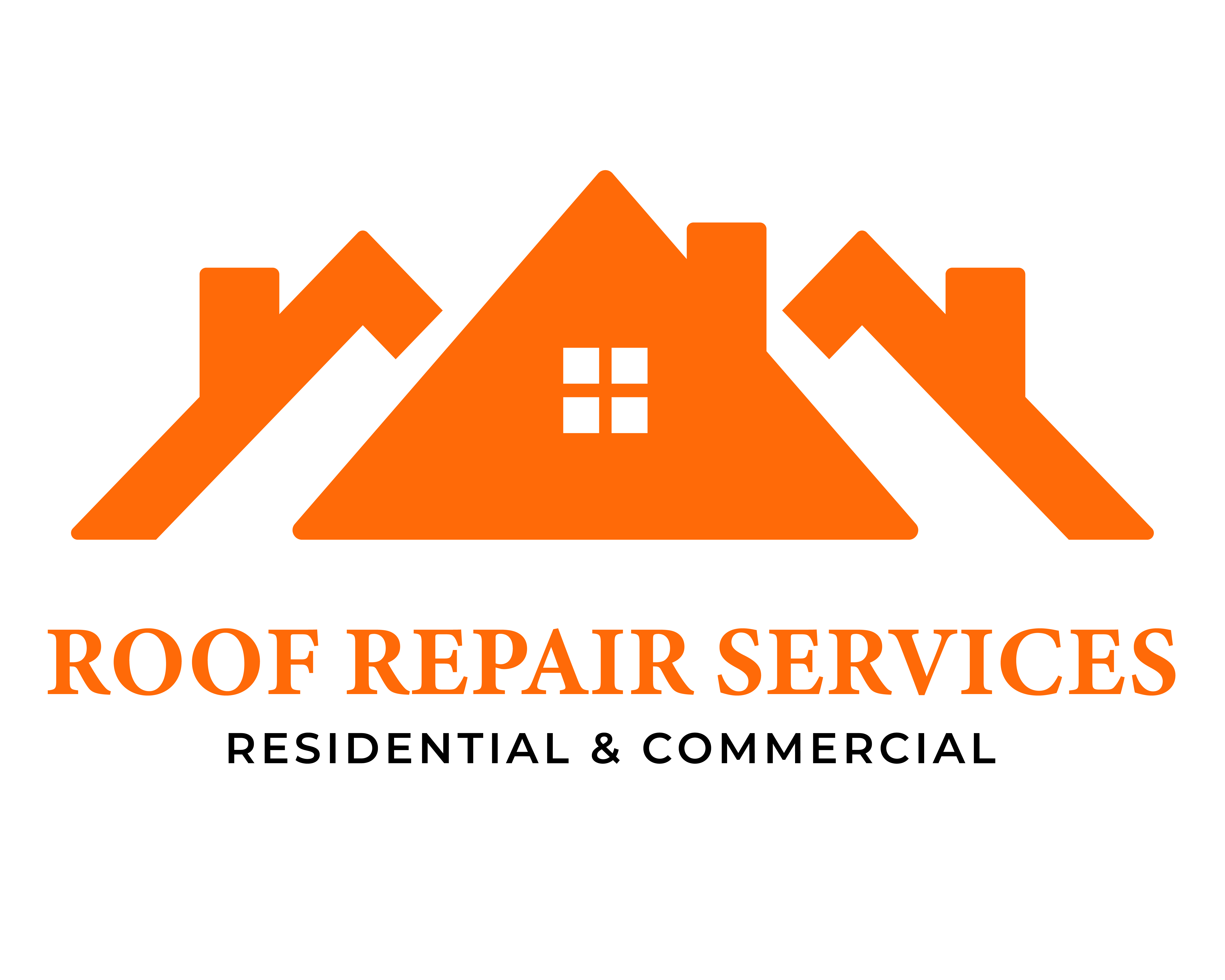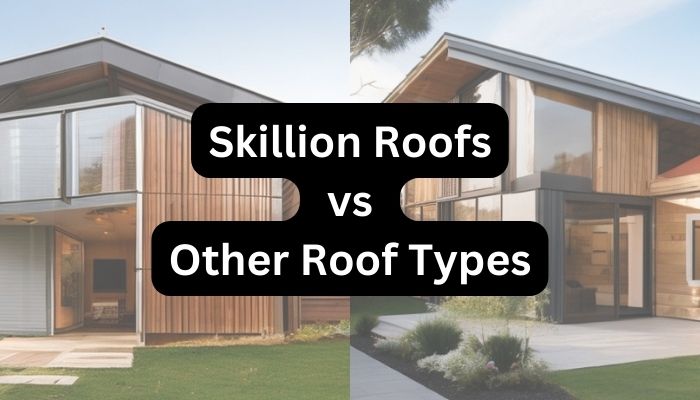What is a Skillion Roof Design? - Roof Repair Services
- Home
- What is a Skillion Roof Design?
Car Repairing
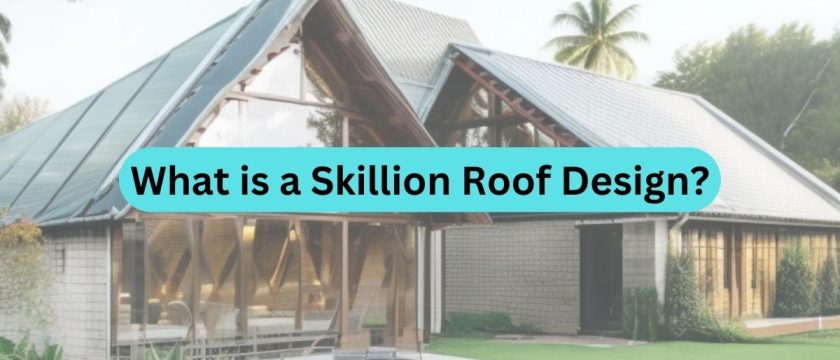
- September 21, 2023
- By: hostaus
- General
- Comments: 0
What is a Skillion Roof Design?
When it comes to roofing, the options are seemingly endless. However, one design, in particular, has been gaining popularity in the world of architecture – the skillion roof. Offering a unique aesthetic, cost-effective construction, and various design variations, it’s no wonder why skillion roofs have become the go-to choice for many homeowners and builders. But, what is a skillion roof, and what makes it stand out from the rest? Let’s explore the world of skillion roofs and discover the benefits and drawbacks of this modern roofing solution.
Key Takeaways
- Skillion roofs are characterized by a single-slope surface with steep pitch, efficient water drainage and exposed rafters.
- They offer cost effectiveness, adaptability to various building materials and increased sun exposure. They may not be suitable for areas with strong winds or considerable snowfall.
- Skillion roofs can be customized through design variations such as the split skillion roof, butterfly roof and oval shaped skillion roof offering unique aesthetics while providing efficiency in water runoff making them an attractive option for budget conscious homeowners.
Defining Skillion Roofs
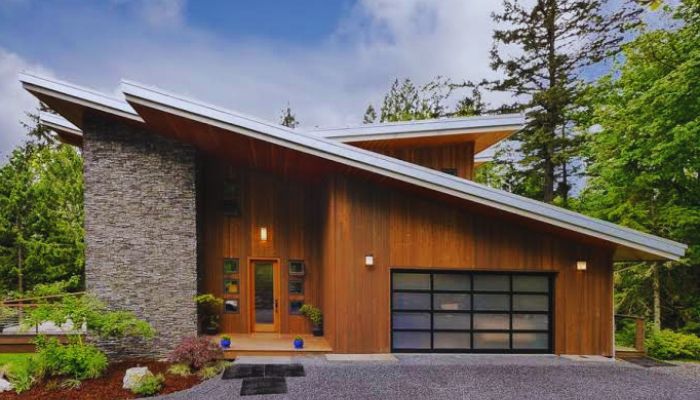
Also known as a lean-to or mono-pitched roof, a skillion roof features a single-sloped surface with a relatively steep pitch. This design sets it apart from traditional gabled roofs, which feature two sloping sides that meet at the ridge. Their sleek, modern appearance and versatility have driven the popularity of skillion roofs, making them suitable for minimal-style homes, home additions, sheds, and garages.
A skillion roof is more steeply pitched than a standard flat roof. This is the key difference between these two roof styles. The steeper pitch of a skillion roof allows for efficient water drainage and makes it an ideal choice for extension buildings and tool sheds. In addition, the skillion roof design can enhance the interior of a home by offering extra-height ceilings and leaving the supporting rafters exposed, creating a distinctive aesthetic.
Key Features
The straightforward assembly of a skillion roof stems from its simple design, which consists of a single flat surface, sloped to create the desired angle. The design is typically standalone and utilizes streamlined materials, such as metal or rubber skins, which contribute to its unique aesthetic. Skillion roofs, also known as flat roofs, are not only cost-effective but also provide efficient water runoff, making them a popular choice for various applications, including residential homes, commercial and industrial buildings, as well as sheds and outbuildings.
The adaptability in design is yet another advantage of skillion roofs. They can be paired with various building materials, such as glass and metal, to achieve a minimalist industrial aesthetic or used in conjunction with conventional suburban building materials for seamless integration with existing designs. Skillion roof designs can also facilitate increased sun exposure, natural light, and warmth, providing added benefits in terms of heating, cooling, and overall comfort within the property.
Comparing Skillion Roofs to Other Roof Types
Compared to other roof types like gable roof or hipped roofs, skillion roofs stand out with their single slope and minimalist design. Traditional gabled and hip roofs feature two or more sloping sides that converge at the apex of the ridge, while a skillion roof has only one slanting side descending from the ridge.
While skillion roofs are more economical and simpler to construct than other roof types, they may not be as robust and might not be suitable for regions with strong winds or considerable snowfall. Regardless of these potential drawbacks, the modern appeal and easy construction process of skillion roofs make them a popular choice for:
- Residential homes
- Commercial buildings
- Industrial facilities
- Sheds
- Outbuildings
Variations of Skillion Roofs
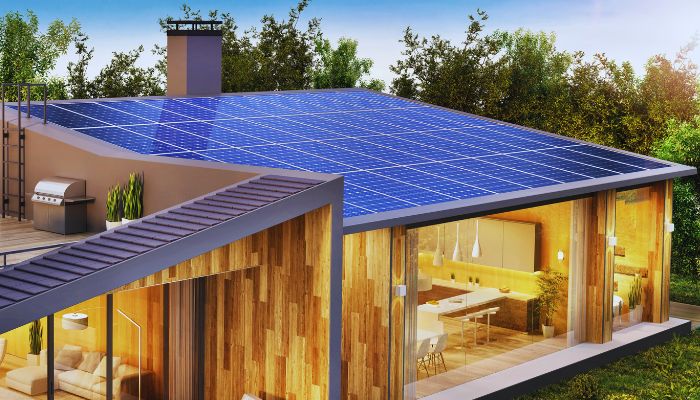
Similar to other roof designs, skillion roofs come in various design variations to meet different aesthetic and functional needs. Some popular variations include the split skillion roof, butterfly roof, and oval-shaped skillion roof.
Each variation offers its unique advantages and visual appeal, facilitating versatile design options tailored to individual requirements.
Split Skillion Roof
A split skillion roof combines the elements of gabled roof and skillion roofing by featuring two sections of single-sided sloped roofs with one side being higher than the other. The two sections are connected at the ridge, creating a distinctive aesthetic that appeals to homeowners seeking a more traditional appearance with a modern twist.
The benefits of a split skillion roof include increased natural light, enhanced ventilation, and a unique aesthetic that sets it apart from other roofing styles. However, the drawbacks of this design are its increased complexity of assembly and higher expenses compared to a standard skillion roof.
Butterfly Roof
The butterfly roof, also known as a double skillion roof, features two sloping sides that converge in the middle, often providing a visually striking aesthetic. This roof type can create various shapes and is an excellent choice for homeowners seeking a unique design element that stands out from traditional roofing options.
A butterfly skillion roof offers efficient water drainage and a considerable surface area for rainwater harvesting, making it an eco-friendly option for those concerned about water conservation. The graceful appearance of the butterfly roof adds a touch of elegance to any building design, making it a popular choice for modern architecture enthusiasts.
Oval-Shaped Skillion Roof
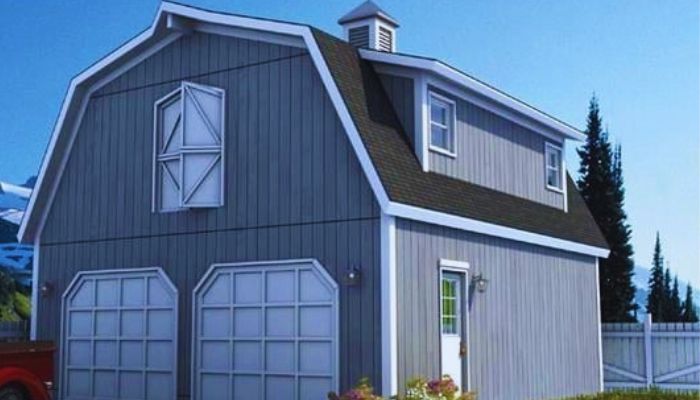
An oval skillion roof features a curved outline, giving it a more contemporary aesthetic and allowing for a range of shapes that can be tailored to suit various building designs. While these roofs are more commonly found in commercial or industrial buildings, they can also be used in residential settings for those seeking a unique and eye-catching design element.
The curved shape of an oval-shaped skillion roof provides increased wind resistance compared to a standard skillion roof, making it an ideal choice for buildings in areas prone to strong winds. However, the cost associated with oval-shaped skillion roofs is typically higher, making them a less popular choice for budget-conscious homeowners.
Materials & Construction of Skillion Roofs
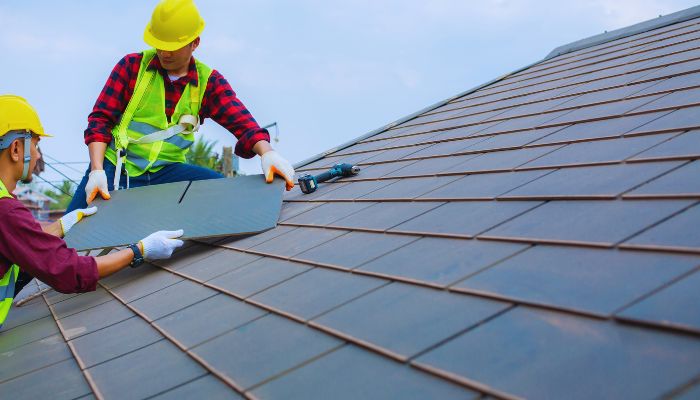
Depending on the desired appearance and functionality, a variety of materials and techniques can be used to construct skillion roofs. Some common materials used in skillion roof construction include metal, rubber skins, and other streamlined roofing materials, while construction techniques may involve trusses, rafters, and purlins.
The materials used in skillion roof construction can be chosen to match the aesthetic of the building,
Material Options
The choice of materials can significantly affect the appearance and performance of skillion roofs. Some popular material options include:
- Standing seam metal
- Wood
- Glass
- Steel
- Polished concrete
- Rubber skin
- Metal finishing
Each material offers its unique set of advantages and drawbacks, making it essential for homeowners to carefully consider their specific needs and preferences before choosing a material for their skillion roof construction.
For example, roofing materials can vary depending on your needs and preferences. Some popular options include:
- Metal roofing: known for its lightweight and robust nature
- Wood: offers a cost-effective option that is easy to work with
- Asphalt shingles: provide an affordable and straightforward installation process, making them a suitable choice for those seeking a budget-friendly roofing solution.
Construction Techniques
The construction process of skillion roofs typically involves laying out the roof, installing the rafters, and attaching the roofing material. Stick-built construction is commonly utilized for simpler skillion roof structures, wherein a roof carpenter cuts and assembles the roof components on site. Furthermore, skillion designs incorporate gutters on all sides, and the roof structure is designed to be impervious to foot traffic, ensuring longevity and durability.
While skillion roofs are relatively simple to construct, it is essential to ensure that the building’s structure can support the additional weight and stress associated with a skillion roof. Engaging the services of a qualified engineer or architect can help ensure that the construction process goes smoothly and that the finished roof meets all necessary safety and building code requirements.
Pros and Cons of Skillion Roofing

As with any roofing solution, skillion roofs have their own set of advantages and disadvantages. Understanding the pros and cons of skillion roofing can help homeowners make informed decisions about whether a skillion roof is the right choice for their specific needs and preferences.
Benefits
With their cost-effectiveness, skillion roofs stand as an attractive option for budget-conscious homeowners. The benefits of skillion roofs include:
- Affordability: Skillion roofs require fewer materials and labor compared to more complex roofing styles, making them a cost-effective choice.
- Simple installation: The installation process for skillion roofs is relatively straightforward, further reducing costs.
- Modern aesthetic: Skillion roofs offer clean lines and a sleek appearance that can complement various architectural styles, making them a popular choice for modern homes.
Apart from their visual appeal, skillion roofs also provide practical benefits like efficient water drainage, making them suitable for regions with heavy rainfall or snowfall. Furthermore, their design allows for ample space for solar panel installation, making them an eco-friendly option for homeowners looking to reduce their carbon footprint and lower energy costs.
Drawbacks
Despite their numerous benefits, skillion roofs, also known as shed roofs, do come with a few drawbacks. One of the most significant disadvantages is the limited attic space they provide, making them less suitable for homeowners requiring additional storage or living space.
Another potential drawback of skillion roofs is their increased vulnerability to wind damage compared to gabled roofs. The simple design of a skillion roof may not be as robust as other roofing styles, making them less suitable for regions prone to strong winds or extreme weather conditions. However, this issue can be mitigated by using high-quality materials and ensuring proper construction techniques are employed during the building process.
Skillion Roof Applications & Examples

From residential homes, commercial and industrial buildings to sheds and outbuildings, skillion roofs find application in a wide range of building types. The unique aesthetic appeal and functional benefits of skillion roofs make them a versatile roofing solution, enhancing the appearance and performance of various structures.
Residential Homes
Residential skillion roof examples can be found in various architectural styles, from modern minimalist homes to rustic country-style houses and even glass houses. The versatile design of skillion roofs allows them to complement a wide range of building styles and materials, making them an attractive option for homeowners seeking a unique and eye-catching roofing solution.
Beyond their visual appeal, skillion roofs also provide practical benefits for residential homes. Their efficient water drainage capabilities make them an ideal choice for regions with heavy rainfall or snowfall, while their ample space for solar panels installation can help homeowners reduce their carbon footprint and lower energy costs.
Commercial & Industrial Buildings
For commercial and industrial buildings, the modern and unique aesthetic of skillion roofs sets them apart from traditional roofing styles. Their simple design and efficient water drainage capabilities make them an attractive option for commercial and industrial applications where functionality is a top priority.
Some examples of skillion roof applications in commercial and industrial settings include oval-shaped roofs designed for wind resistance and multiple skillion roofs for easy construction and maintenance. The versatility of skillion roofs allows them to be tailored to meet the specific needs and preferences of various commercial and industrial building designs.
Sheds & Outbuildings
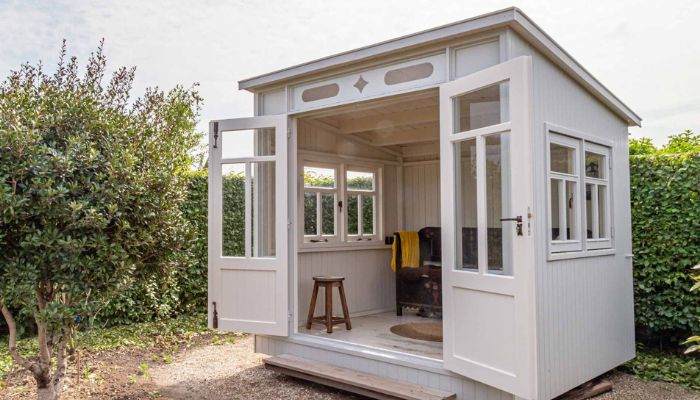
Owing to their efficient water drainage and simple construction process, skillion roofs are an ideal choice for sheds and outbuildings. Their benefits include:
- Efficient water drainage
- Simple construction process
- Rapid assembly
- Cost-effective
- Practical choice for homeowners looking to add additional storage or workspace to their property.
Examples of skillion roof applications in sheds and outbuildings include:
- Minimal-style sheds
- Unique and sleek shed designs
- Circular or oval-shaped skillion roof designs
- Butterfly roofs
The diverse range of design variations available for skillion roofs ensures that there is a suitable option for any shed or outbuilding project.
Summary
Skillion roofs offer a unique and modern roofing solution that combines aesthetics, functionality, and affordability. With various design variations, material options, and construction techniques available, skillion roofs can be tailored to suit a wide range of building styles, from residential homes to commercial and industrial buildings, as well as sheds and outbuildings. Despite some drawbacks, such as limited attic space and increased vulnerability to wind damage, the numerous benefits of skillion roofs make them an attractive option for homeowners and builders alike. As the popularity of skillion roofs continues to grow, it’s clear that this versatile roofing solution is here to stay.
Frequently Asked Questions
What is the purpose of a skillion roof?
A skillion roof is designed for optimal drainage, preventing water damage and making it suitable for rainwater collection.
What are the disadvantages of a skillion roof?
The disadvantages of a Skillion roof include low ceiling heights with steep pitch, vulnerability to vandalism in strong winds, and less structural support than typical gable or hip roofs.
What is the difference between a flat roof and skillion roof?
A flat roof is typically level and has no slope, while a skillion roof has a single, steeper pitched surface.
What is a skillion roof?
A skillion roof is a single-sloped roof with a steep pitch commonly used for residential, commercial and industrial buildings, as well as outbuildings and sheds.
What are the benefits of skillion roofs?
Skillion roofs are cost-effective, easily installed, aesthetically pleasing, and allow for efficient water drainage and additional space to install solar panels.
